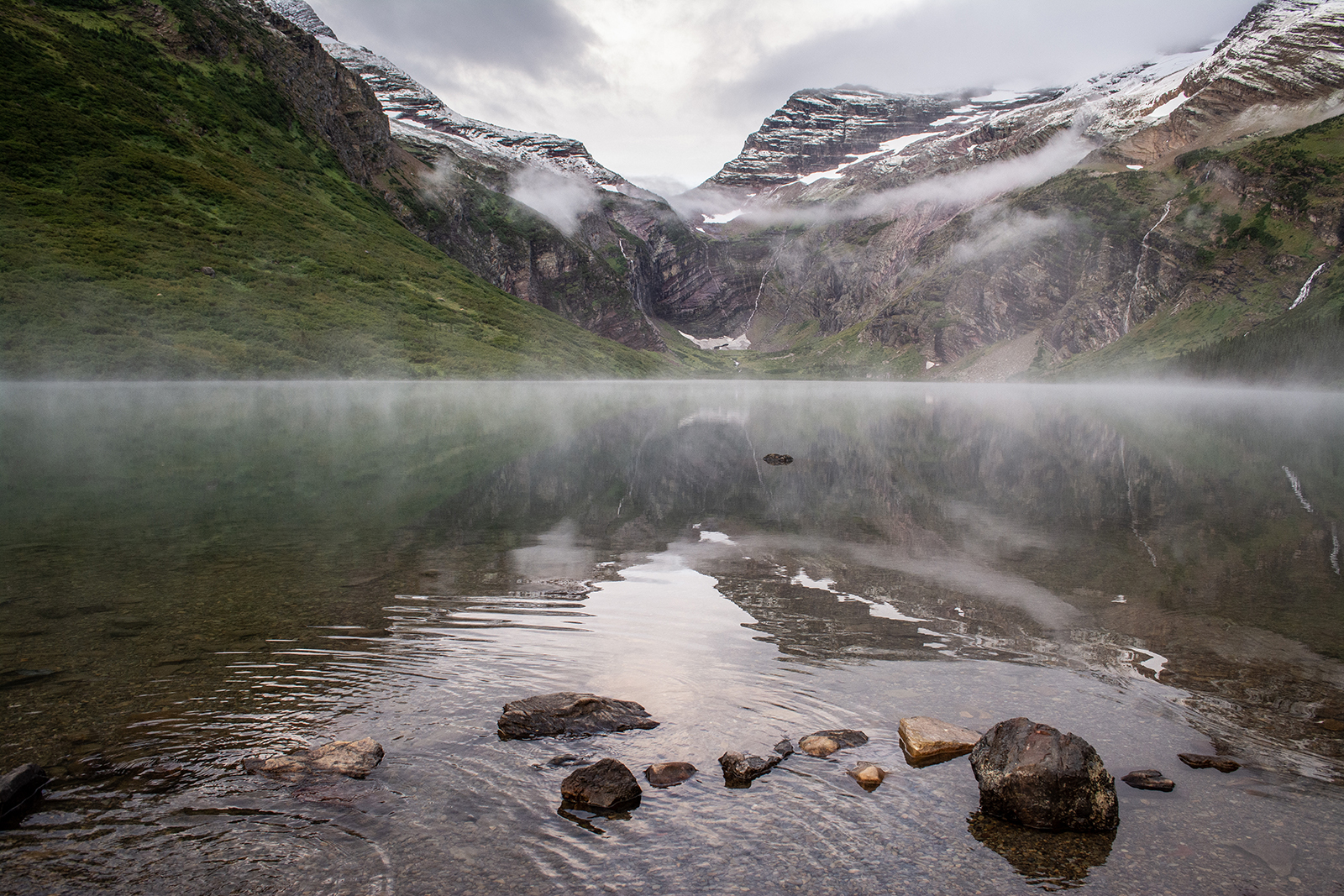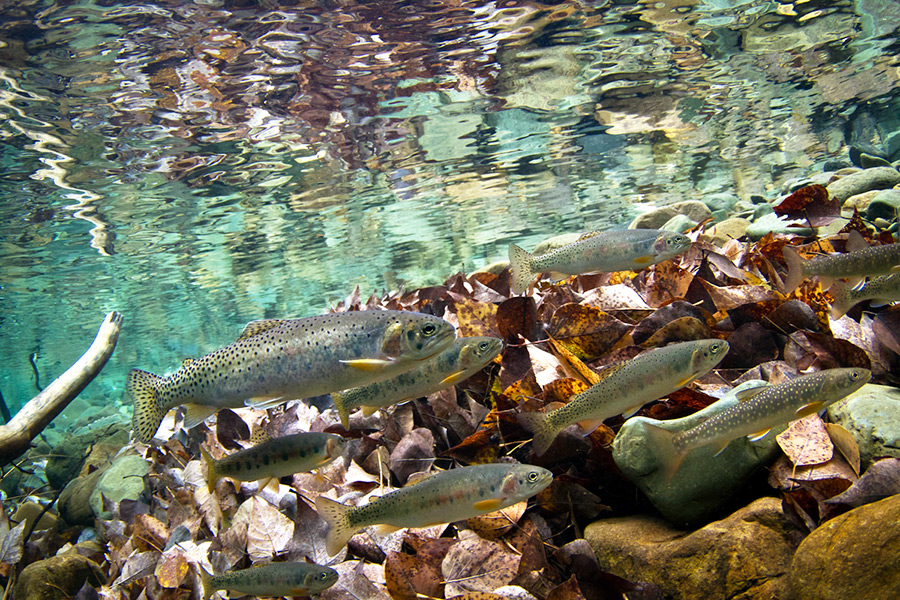Public Review Begins for Native Trout Preservation Project in Glacier Park’s Gunsight Lake
If approved, fisheries managers would remove non-native rainbow trout from the alpine lake using a fish toxicant and replace them with genetically pure strains of westslope cutthroat and bull trout. The project would begin Sept. 1.
By Tristan Scott
Glacier National Park fisheries managers are seeking public comment on a proposed conservation project aimed at restoring genetically pure populations of native westslope cutthroat trout and bull trout to Gunsight Lake, an alpine gem located north of Mount Jackson at the headwaters of the St. Mary River, which is the last drainage east of the U.S. Continental Divide to support native bulls.
To help inform an environmental assessment of the project, public comment must be submitted by June 14 to the National Park Service’s (NPS) Planning, Environment & Public Comment (PEPC) website at https://parkplanning.nps.gov/GunsightLake.
The impetus for the proposal, according to fisheries biologists with Glacier Park, as well as other state, tribal and federal natural resource management agencies, is rooted in the mounting threats to native populations of bulls and cutts in the St. Mary River drainage. A tributary of the South Saskatchewan River drainage, the St. Mary populations of native trout are losing their genetic purity due to hybridization with non-native rainbow trout, which radiate outward from infested lakes, including Gunsight.

Meanwhile, climate change presents additional threats that could compound the stressors faced by bull trout and westslope cutthroat trout in the St. Mary drainage, according to biologists, including changes in stream flow and warmer water temperatures that favor non-native species.
According to the proposal, Gunsight Lake is a prime candidate for the removal of non-natives and the translocation of native fish species because it features geographic barriers that can stave off natural invasions, including several waterfalls located downstream.
Situated in an alpine cirque and flanked by high peaks — Fusillade Mountain rises to the north and Gunsight Mountain to the west, while the towering monolith of Mount Jackson looms more than 4,700 feet above the lake’s surface to the north — Gunsight Lake was historically fishless; however, in 1916 park officials stocked it with 35,000 non-native cutthroat trout, and then again from 1920-1936, this time with 224,000 rainbow trout. The rainbow trout established a self-sustaining population in the lake while migrating downstream to the St. Mary River, where they hybridize with native cutthroat and bull trout, a species of special significance because they’re listed as threatened under the Endangered Species Act (ESA).
To re-establish the native trout populations and curb the trend of hybridization, Glacier National Park is proposing to remove non-native rainbow trout from Gunsight Lake and establish the lake as secure habitat for native westslope cutthroat trout and bull trout. Under the proposal, non-native rainbow trout would be removed from Gunsight Lake using an EPA-registered and approved fish toxicant rotenone. While rotenone degrades naturally with sunlight and water movement, detoxification would be hastened with a neutralizing agent, the proposal states. The neutralizing agent, potassium permanganate, is widely used for the treatment of municipal drinking water and wastewater. Both rotenone and potassium permanganate would dissipate with no detectable long-term changes to water quality.
Project activities would begin in early September 2023 with application in late summer or early fall to reduce the likelihood of non-target organisms being present, according to the proposal. Native fish, including westslope cutthroat trout and bull trout, are not currently present in Gunsight Lake. The treatment area and Gunsight Pass Trail would be temporarily closed to the public during rotenone application. The Gunsight Lake wilderness campground would be closed to camping Sept. 1, 2023 until spring of 2024.
Following the removal of the non-native rainbow trout, genetically pure westslope cutthroat trout and bull trout would be translocated into Gunsight Lake, likely by helicopter.
In 2019, Glacier National Park in partnership with Montana Fish, Wildlife and Parks (MFWP), the U.S. Fish and Wildlife Service (USFWS), and Glacier National Park Conservancy undertook a similar project in the Camas Creek drainage, removing non-native Yellowstone cutthroat trout from Camas and Evangeline lakes and translocating native westslope cutthroat trout and bull trout to both lakes.
The EA evaluates impacts to westslope cutthroat trout; bull trout; amphibians; aquatic macroinvertebrates; zooplankton; grizzly bears; common loons and other water birds; water quality; recommended wilderness; natural soundscapes; and visitor use and experience.
Comments can be posted on the NPS PEPC website at https://parkplanning.nps.gov/GunsightLake or sent by mail to Superintendent, Glacier National Park, Attn: Gunsight Lake EA, P.O. Box 128, West Glacier, Montana, 59936.